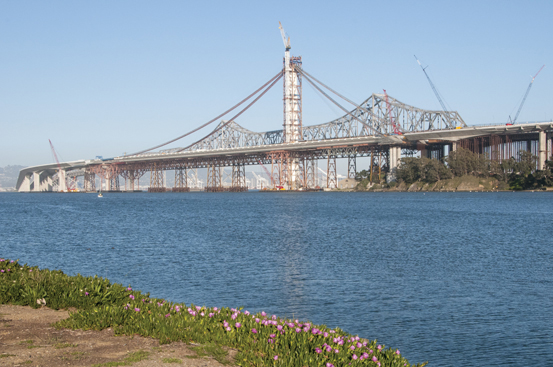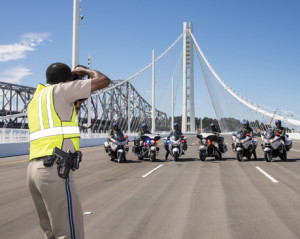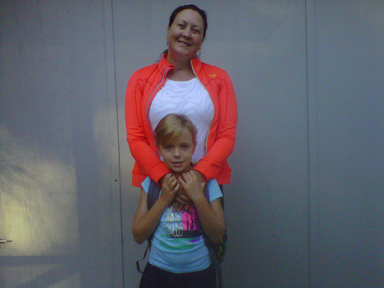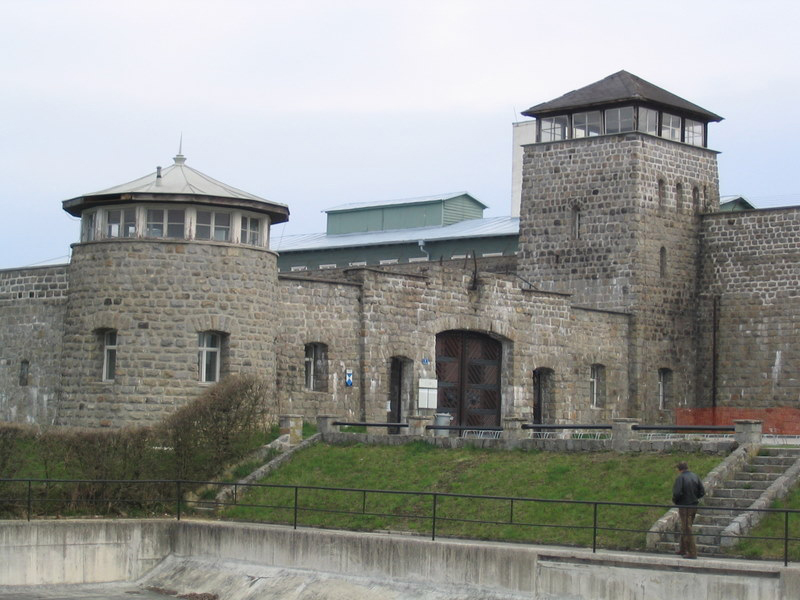We all know the basic function of a bridge is to span a gap between two locations, enabling citizens to travel between them more easily. But certain bridges in key locations also span a gap in time – it connects past, current and future generations together. Once in a while, a signature bridge of great architectural design becomes an inspiration to its community. The San Francisco-Oakland Bay Bridge is this type of structure.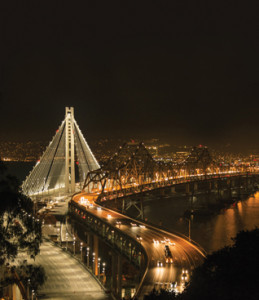
In the early 1900’s, California road builders felt the bay water that separated the two metropolitan communities was too deep and wide, making a bridge an engineering impossibility. For decades, commuters piled onto a fleet of ferry boats, whether by foot, automobile or trolley, to leisurely cross between the East Bay and the city of San Francisco.
San Francisco and Oakland grew up as separate communities, even with the constant, but measured, flow of goods, services and people between them. During the year of 1928, ferries carried over 46 million passengers between the two shorelines. Finally, with the exploding popularity of the automobile, it was determined that a bridge was necessary and such a structure could financially support itself with tolls.
The challenges of building this bridge were monumental. California State Highway Engineer Charles C. Purcell was put in charge of organizing the design and construction of the Bay Bridge. Fortunately, Yerba Buena Island was located about halfway between the two shorelines. This allowed for two independent spans that would meet at the island, connecting via a tunnel.
Spanning the western section between the San Francisco and Yerba Buena Island required ingenuity on a grand scale. The water, 100 feet deep at some points, and the underlying soil conditions, required new techniques for placing bridge foundations. The solution was to build two consecutive suspension bridges using the same basic architectural design as the Golden Gate Bridge.
The eastern crossing from the Oakland shoreline to Yerba Buena Island was also an immense feat of engineering, although less difficult than the deep water crossing on the western side. This bridge span was designed as a double cantilevered section (adjoining Yerba Buena Island) connecting to a double-deck truss bridge leading to the Oakland shoreline. The cantilevered section was 10,176 feet long, the longest bridge of its kind at the time. It also employed theworld’s deepest bridge pier, sunk 242 feet below water level.
Construction took three years, and was completed six months ahead of schedule. The bridge had consumed over six percent of the total steel output of the nation in 1933. Total costs were $77 million, including the construction of the Transbay Transit Terminal. The bridge opened in November, 1936, about six months before the Golden Gate Bridge. While an efficient vehicle transport system, cantilevered and truss bridges were a common style for dozens of railroad bridges built in the US at that time. Architecturally, the eastern span seemed to echo the demographics of Oakland, a working class community, and was nowhere as inspirational as the Golden Gate Bridge or the western span of the Bay Bridge!
In its early years, the bridge carried three lanes of auto traffic in each direction on the upper deck. The lower deck was reserved for truck traffic and inter-urban railways. This included the Key System street cars that ran through many communities in the East Bay and carried commuters to San Francisco throughout the day.
But automobile traffic increased greatly over the post-WWII years. In 1958, the railway system was removed and the upper deck was re-aligned to carry five lanes of westbound truck and auto traffic. The lower deck carried five lanes of eastbound traffic.
The Bay Bridge became the work-horse for the inter-city automobile traffic, with 270,000 vehicles crossing it each day. It was a crucial support element in the economic growth of the Bay Area. There were a few minor bridge closures, mostly for accidents or maintenance, until the Loma Prieta earthquake struck in 1989. There was an inherent design flaw in the eastern span, where the cantilevered section abutted the truss section. This caused a portion of the upper deck to fall onto the lower deck. Further study indicated the bridge had narrowly avoided a more catastrophic failure. The Bay Area would experience significant economic disruption if the Bay Bridge ever suffered such a cataclysmic failure.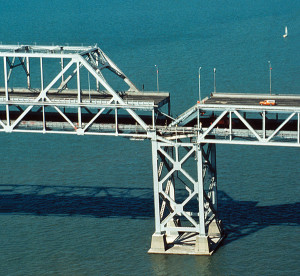
Caltrans determined it would be less expensive to build an entirely new eastern span than to seismically retrofit the existing one. The initial design proposed was an elevated viaduct or skyway, consisting of reinforced concrete columns and roadway segments. The seismic design criterion for the new bridge required it to survive an 8.5 magnitude earthquake. The replacement bridge was authorized in 1998 and construction of the skyway segment began in January, 2002.
However, an extensive amount of political infighting and financial squabbling followed for various aesthetic, financial, and political reasons. In the end, it was decided to build a “signature” section as part of the new eastern span. For various reasons, this design of this section is based on an asymmetric, single-tower, self-anchored suspension architecture, which is very rare yet quite elegant. Construction on the “signature” span, which is located above the shipping channel and connects the skyway portion of the bridge to Yerba Buena Island, began in September, 2007. The entire bridge was completed in mid-2013 at the phenomenal cost of $6.4 billion. The grand opening was held immediately after the Labor Day holiday with very little fanfare.
While it will carry about the same amount of traffic as before (five lanes in each direction), it’s much safer for many reasons. The seismic design goal of the bridge is to withstand the largest potential earthquake the Bay Area might have in 150 years! For drivers, there are now shoulders on the roadway where one can pull over if they run out of gas or have a mechanical vehicle issue. For pedestrians and bicyclists, there is now a walkway attached to the side of the bridge. For night driving, the lighting on the bridge and in the Yerba Buena Tunnel is much brighter.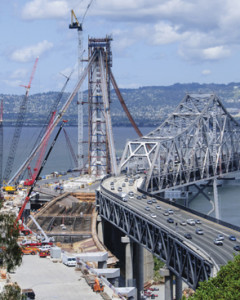
Most of the span was designed to be causeway style – very open with all supports underneath the bridge on the skyway segments. This creates a very “open feel” for drivers crossing the bridge, especially in the east-bound direction where before, they were enclosed within the lower deck of the prior double-deck bridge. For west-bound drivers, the views to the north and west are open and expansive (unless the fog is in). One does not get a claustrophobic feel when stuck in heavy traffic!
My initial drive across the new eastern span was one of mixed emotions. I was locked in the back seat of a Highway Patrol escort car at the time, so that may have affected things. It’s hard to get the full visual effect of the new suspension architecture when looking thru bars.
However, I was inspired by the new “signature” span. It is a work of art and will have a lasting positive impact on every tourist’s initial impression of Oakland, when one drives easterly in to the east bay community. It also imparts a sense of awe for drivers and passengers driving westerly into San Francisco because of the awesome view from Berkeley to Alcatraz to the Golden Gate Bridge.
Whether the cost of construction will end up being worth it, this new Bay Bridge definitely has the cache to become one of the most highly regarded in the world.
